Cards In This Set
| Front | Back |
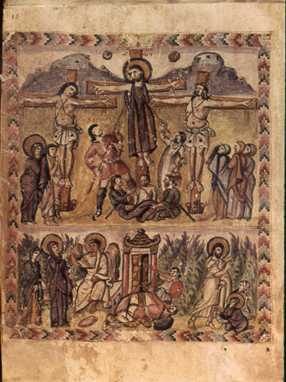 |
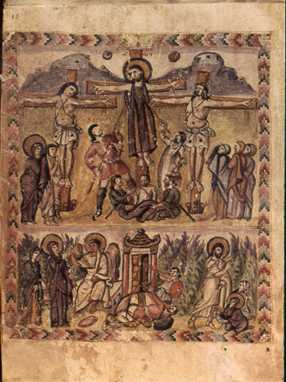 Crucifixion, Rabbula Gospels, 6th Century, Byzantine, Syria |
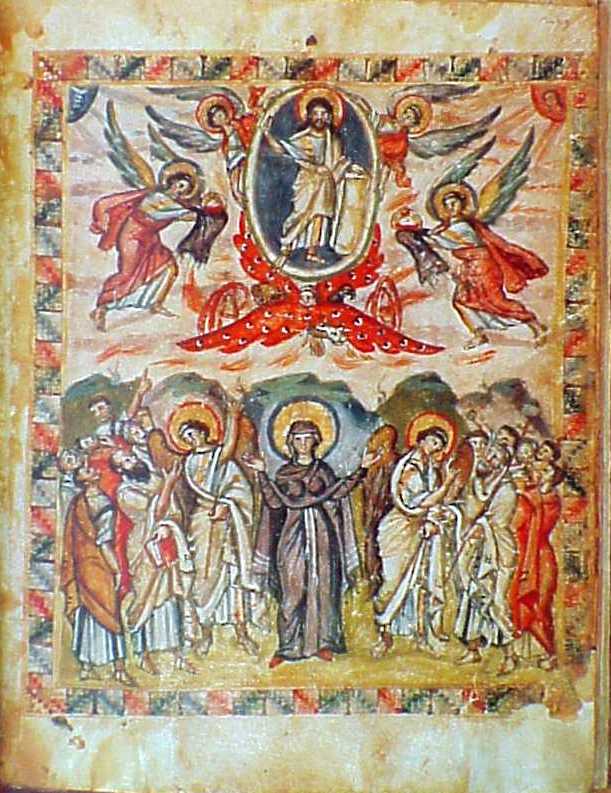 |
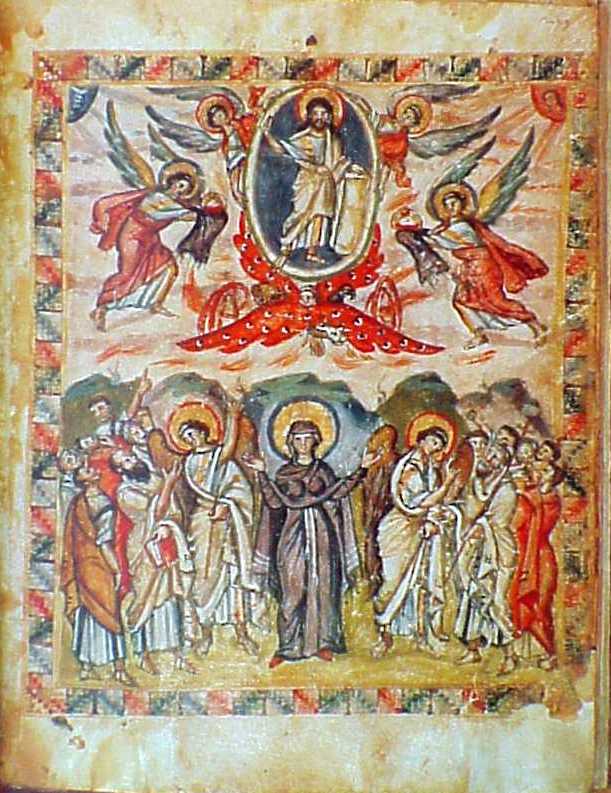 Ascension, Rabbula Gospels, 6th Century, Byzantine, Syria |
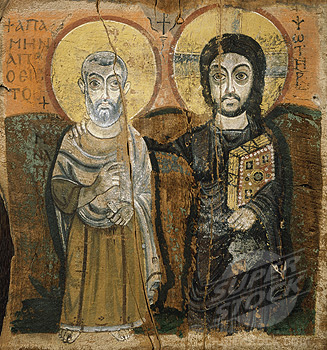 How was this painting used? How are proportions manipulated to make figures look more powerful? |
Coptic, 6th-7th century, byzantine , egypt Used as an Icon/ christ is taller than saint (to show divinity)and gazes upward to the right; the saint looks straight into the viewers eyes. Christ shows that he favors the saint and coptic christians. Gestures of unity (Byzantine: in the sense that figures are elongated and are flat; huge eyes
|
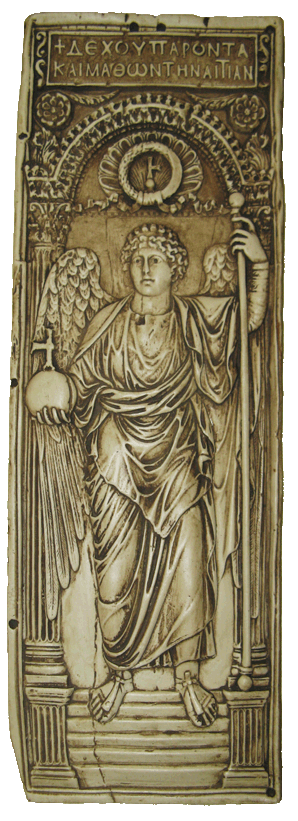 Describe the iconography of the Archangel Michael |
Archangel Michael, early 6th Century, Byzantine, Constantinople we know its christian because he has wings and there is a cross above his head; well defined facial features; draped figure/ orb in hand angel seemed to hover over staircase ; shows cross is Grecco Roman.
|
|
Describe the Style of the Rabbula Gospels
|
Canon tables ( interlacing and columns) Lacertine/ Horror Vacuii/ flat and 2 dimensional activeness but it is constrained and controlled. It expresses spontaneity and directness. Ornamented with flowers and birds
|
|
How does the Rabbula Gospels express emotion and action. Be specific.
|
On the Crucifixion you can see piercings in Christ's hands. The thieves are slumped over - showing emotion. They included Mary in the ascension even though she wasn't there
|
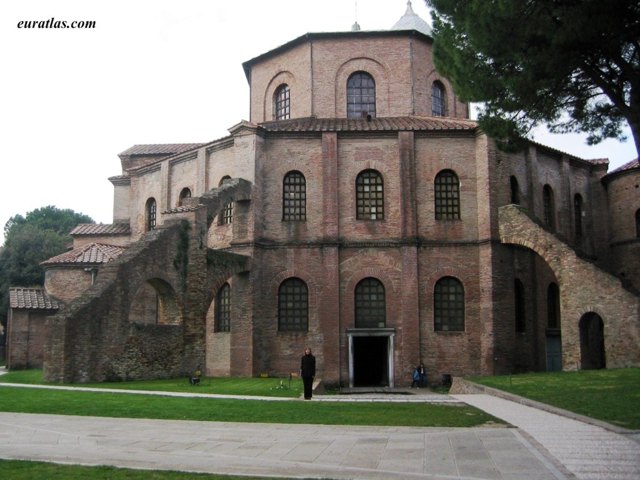 Describe the plan of San Vitale. How does it differ from a Basilican plan? How does it accommodate the processional liturgy? |
San Vitale, 546-548, Byzantine, Ravenna, ItalyCentralized plan. (plain exterior) instead of having a clerestory it has windows throughout. On either side of the windows are buttresses. Octagonal in Shape, dome in the center. Reveal octagonal format reserved for baptisteries and tombs, association of new life.
|
|
How do buttresses work? Why are they necessary?
|
Buttresses thicken walls. B/C when you punch holes through the wall it weakens things.
|
|
Describe the interior of San Vitale. What impressions were its creators trying to create? Why? How did they achieve this impression?
|
Interior: full of light and color Idea: create allusion that all of it is floating. Center: symbolic lamb of god. meant to overwhelm your senses. Piers hold everything up and everything curves out Imagery is supposed to absorbed as a unity
|
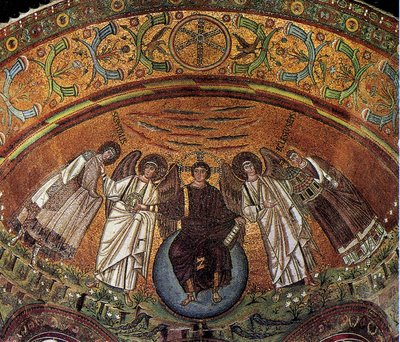 Discuss the style and iconography of Christ Enthroned, San Vitale. How is it similar and how and why does it differ from earlier renditions of the subject? Where was it placed in the church and why? |
Christ Enthroned, San Vitale, 546-548, Byzantine, Ravenna, ItalyIconography: Christ dressed as emperor flanked by archangels , and a bishop and saint sitting on the world, holding out a laurel for victory / sumptuous decorationChrist = beardless, short hair, dressed in imperial purple location: apse
|
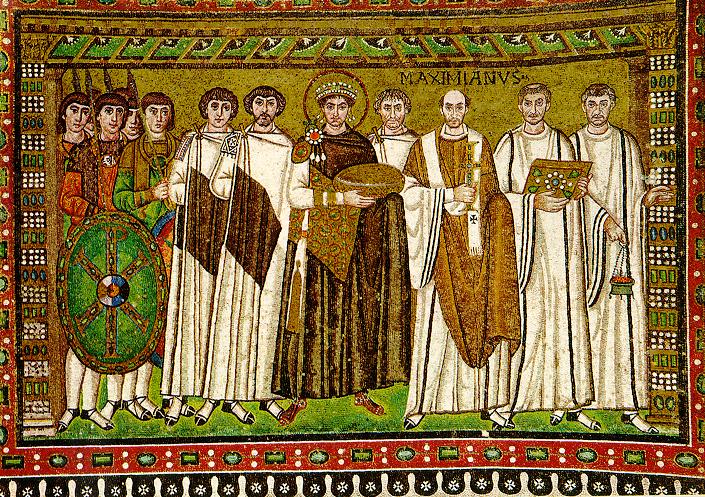 Describe the style and iconography of the Justinian mosaic at San Vitale. How were they used as political propaganda? How were these two personages conflated with Christ and the Virgin Mary? |
Justinian and his Retinue, San Vitale, ravenna Italy 546-548, ByzantineIconography: Justinian and his attendants . Halo/ stepping on his foot, takes up the most space, dressed in purple. However Maximianus, ( we know he is an archbishop because he is holding a precessional cross) is the only one identified (his name is above him) He is even taller than Justinian.. he is just placed in front of him so it's misleading. His face is also more detailed. Figures are flat and elongated , eyes are largerU have the political on one side and the church on the othereucharist
|
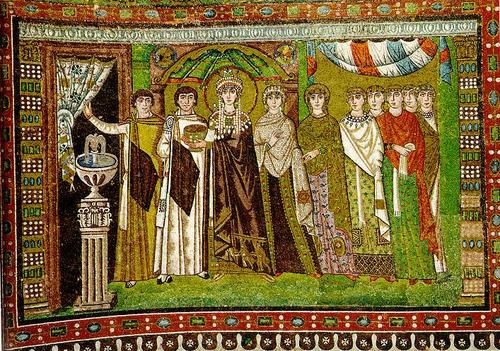 Describe Theodora: |
Taller elaborate head dresshalo/ purple robe holding up chalis of wine together her and justinian help w/ the sacrament left; the fountain symbolizes baptism The 3 magii embroidered on the hem of her robe makes the act of offertory explicit
|
|
Where were the Justinian and Theodora Mosaics at San Vitale placed and why?
|
The apse / most visible
|
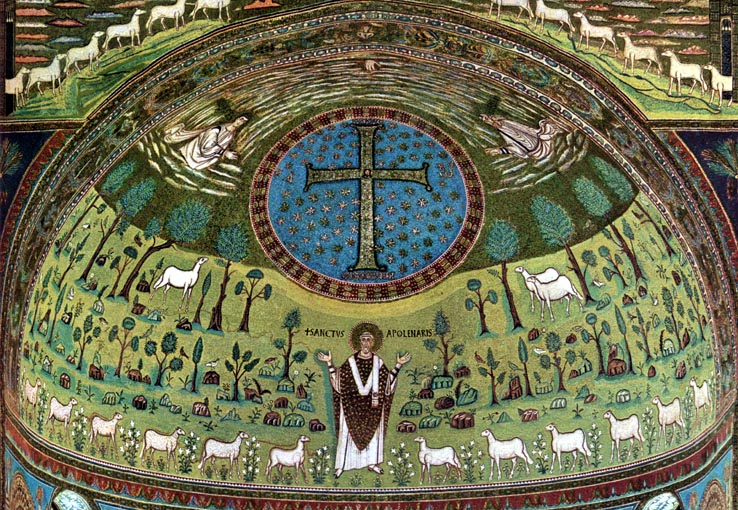 Describe the style and iconography of the apse mosaic of Sant' Apollinaire in Classe. How is it similar to other apse mosaics? How does it differ? Why is it considered Byzantine in style? |
Style: Basilican/ plain exterior sumptuous interior beautiful marble columns (drill work shows they are in Byzantine Empire. Named after Saint Apotenaris (He is elongated) in orant position ; he is flattened & has big eyes. Iconography: 12 apostles = sheep ; hand of god reaches out from the clouds Lily = purity flanking him sideways gold background Huge cross floats directly above him (swirling clouds and angels)Differs from other apses because it is very abstract (no spatial quality) flat green backdrop details are isolated and treated as individual motifs 2 overlapping themes : iconic and symbolic formSimilar: christ is a common theme; hand of god reaching out from clouds
|
|
How did the architects of Hagia Sophia Resolve the problem of the longitudinal versus the centralized plan. be specific.
|
(memorize these names) Athemius of Tralles and Isodorus of Miletus the plan: both longitudinal and centralized (They elongate by having a centralized dome but 2 half domes on the side to make you focus on the center. Shows longitudinal axis on nave but with central dome and half circle domes either end resulting in elliptical shape.Dome rests on four arches supported by four great piers. In the end the dome is a circle inscribed in a square.
|



